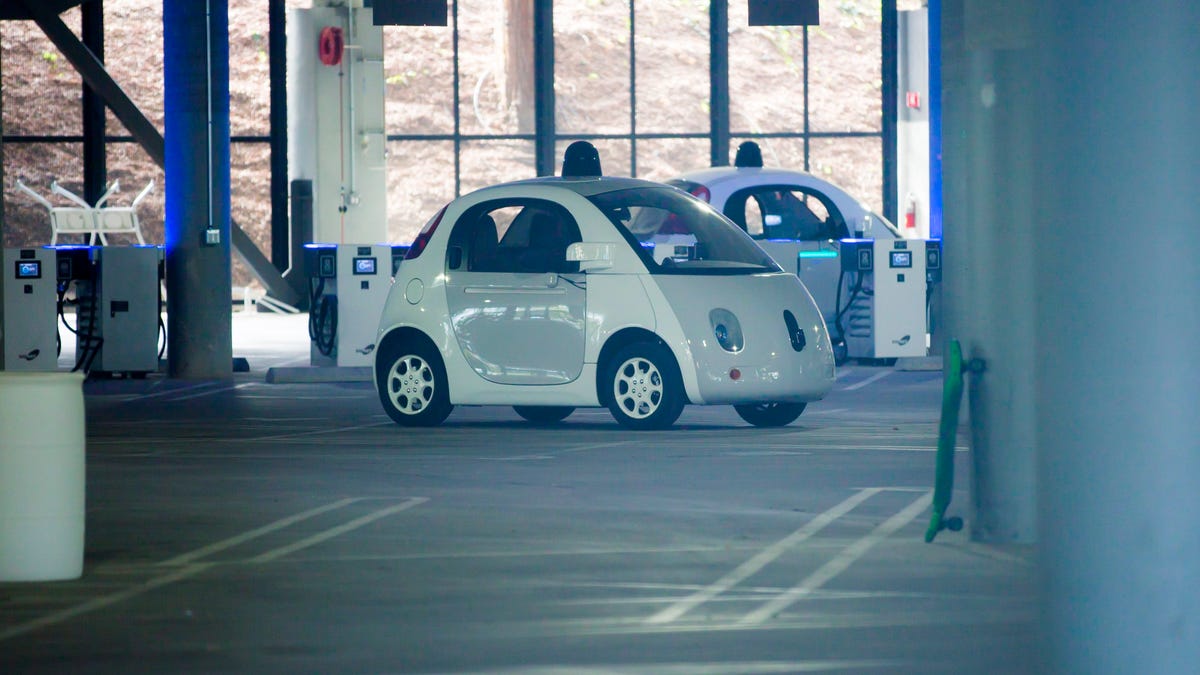Feds declare that Google's self-driving car is its own driver
In a letter to Google, the National Highway Traffic Safety Administration determined that the computer piloting Google's self-driving cars can be considered a driver, for purposes of the car's control placement.

US regulations detail much of how cars are designed, from steering wheel placement to headlight brightness, all based on the idea of having a human in the driver's seat. But what do those regulations mean when a silicon brain is processing the feeds from radar, lidar and cameras, then enacting steering, braking and acceleration decisions in a car?
Chris Urmson, Google's director of its self-driving car project, apparently queried the National Highway Traffic Safety Agency (NHTSA) for clarification on how Google's proposed self-driving cars could meet the Federal Motor Vehicle Safety Standards (FMVSS), the rules that automakers must abide by when designing cars for the US market.
NHTSA posted a detailed response on its Web site. The response shows that Google was concerned how the FMVSS could be applied to a computer-controlled car lacking a steering wheel or any other traditional driver controls. Urmson suggested that NHTSA could interpret the FMVSS as not to apply to Google's cars at all, or that it require a traditional interpretation, assuming a driver in the left front seat, or that the system controlling the car could be considered the driver.
In NHTSA's letter, it chose the latter solution, determining that the self-driving system is the driver for purposes of the FMVSS.
Google has been developing its self-driving car systems over the last few years, beginning with a fleet of Priuses topped by lidar "chandeliers" to its current fleet of custom-designed pod cars. The current fleet is being tested on roads around Google's Mountain View, California campus, and are restricted to a top speed of 25 mph. State law allows for testing on public roads, but requires a human driver be ready to take over if the car's systems fail.
When Google first proposed its current custom-designed self-driving cars, they lacked internal driver controls. Responding to state and federal regulations at the time, Google added in human driver controls to the design.
Having determined that the SDS could be considered the driver, NHTSA's letter interprets how each section of the FMVSS applies. For example, NHTSA requires that brake pedals be located as to be accessible to the driver. If the SDS is the driver, then brake actuation is accessible through electronic control, and therefore complies with the FMVSS.
The letter shows NHTSA's difficulty applying some of its rules to Google's SDS. Rear-view mirror position, for example, is determined based on human driver's head position, with the FMVSS detailing angles and fields of view based on representative test subjects. Here, the SDS has no need for rear-view mirrors, assuming a full sensor array, making these rules obsolete.
In general, NHTSA's determination seems to be a victory for Google, letting it go forward with its intended self-driving vehicle design. However, individual state rules will still apply as to how Google's cars can be operated on public roads.

